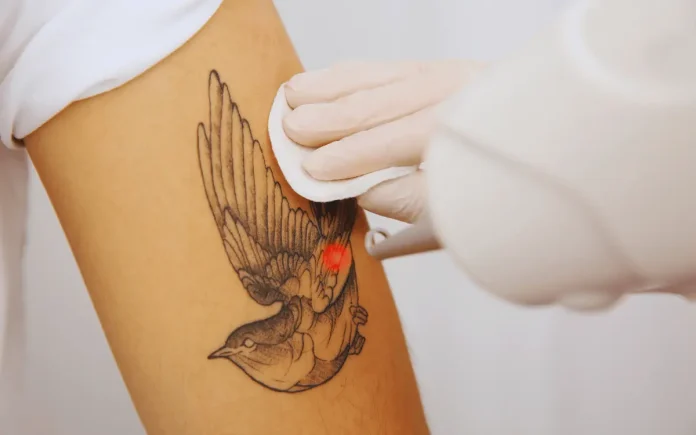
Deciding to remove a tattoo is a significant decision, and understanding the costs involved is essential for proper planning. While the exact cost of tattoo removal can vary depending on several factors, including the size, color, and complexity of the tattoo, as well as the chosen removal method and location, there are ways to estimate the expenses involved.
In this comprehensive guide, we’ll explore the various factors that influence the tattoo removal cost and provide valuable insights on how to estimate the overall expense of having a tattoo removed.
1. Size and Complexity of the Tattoo
One of the most significant factors influencing the cost of tattoo removal is the size and complexity of the tattoo. Larger tattoos typically require more sessions and resources to remove completely, resulting in higher overall costs. Additionally, tattoos with intricate designs or multiple colors may be more challenging to remove, further impacting the total expense. When estimating the cost of tattoo removal, consider the size and complexity of your tattoo as a primary determining factor.
2. Location of the Tattoo
The location of the tattoo on your body can also affect the cost of removal. Tattoos located in areas with thin skin, such as the wrists, ankles, or neck, may be more challenging and time-consuming to remove, leading to higher costs. Conversely, tattoos on larger, fleshy areas of the body, such as the upper arm or back, may be easier and less expensive to remove. When estimating costs, take into account the location of your tattoo and any associated challenges or complexities.
3. Color and Ink Type
The color and type of ink used in your tattoo can significantly impact the cost of removal. Certain ink colors, such as black or dark blue, respond more effectively to removal treatments, resulting in faster and more affordable outcomes. However, tattoos with lighter or brighter colors, such as red, yellow, or green, may require additional sessions and specialized treatments, increasing the overall cost.
Additionally, tattoos created with homemade or low-quality ink may be more stubborn to remove, leading to higher expenses. Consider the color and type of ink used in your tattoo when estimating removal costs.
4. Removal Method
There are several methods of tattoo removal available, each with its unique benefits, drawbacks, and associated costs. Common removal methods include laser removal, surgical excision, and dermabrasion. Laser removal is the most popular and widely used method, but it can be costly, requiring multiple sessions over several months to achieve desired results. Surgical excision, while effective for small tattoos, may be more invasive and expensive.
Dermabrasion, which involves sanding down the skin’s surface, is less commonly used and may require multiple treatments to achieve satisfactory results. When estimating removal costs, consider the chosen removal method and any associated expenses, such as consultation fees, anesthesia, and post-treatment care.
5. Number of Sessions Required
The number of removal sessions required to achieve desired results can significantly impact the overall cost of tattoo removal. While some tattoos may fade after just a few sessions, others may require numerous treatments spread out over several months or even years.
Factors such as the size, color, and location of the tattoo, as well as individual skin characteristics, can influence the number of sessions needed. When estimating removal costs, be prepared for the possibility of multiple sessions and consider the associated expenses, including treatment fees, follow-up appointments, and aftercare products.
6. Geographic Location and Provider
The geographic location of the removal clinic or provider can also affect the cost of tattoo removal. Clinics located in urban areas or regions with higher living costs may charge more for their services, reflecting overhead expenses such as rent, utilities, and staffing.
Additionally, the experience, qualifications, and reputation of the removal provider can influence pricing, with highly skilled and reputable providers often commanding higher fees. When estimating removal costs, consider the geographic location of the clinic and provider and research multiple options to find a provider that offers quality services at a reasonable price.
Conclusion
Estimating the cost of tattoo removal requires careful consideration of several factors, including the size and complexity of the tattoo, its location on the body, the color and type of ink used, the chosen removal method, the number of sessions required, and the geographic location and provider.
By understanding these factors and their impact on removal costs, you can make informed decisions and better plan for the expenses involved in removing your tattoo. Remember to consult with multiple removal providers, ask questions, and discuss your goals and concerns to ensure that you receive quality care and achieve satisfactory results within your budget.
FURTHER READING









